
Two blocks of masses m1 and m2, which are connected with a light string, are placed over a friction less pulley. This set up is placed over a weighing machine, as shown. Three combination of masses m1 and m2 are used, in first case m1=6kg and m2=2kg, in second case m1=5kg and m2=3kg and in third case m1=4kg and m2=4kg. masses are held stationary initially and then released if the readings of the weighing machine after the release in three cases are W1,W2 and W3 respectively then:
W1>W2>W3
W1<W2<W3
W1=W2=W3
W1=W2<W3
The correct Answer is:B

Reading of the weighing machine=2T+ weight of the machine.
As weight of the machine is constant.
T=2m1m2m1+m2
So reading is maximum for the case m1m2 is maximum as m1+m2 in all cases is same.
Similar Questions
Two block with masses m1=3kgandm2=5kg are connected by a light string that slides over a frictionless pulley as shown in figure. Initially, m2 is held 5 m off the floor while m1 is on the floor. The system is then released. At what speed does m2 hit the floor?

View SolutionThree blocks of masses m1=4kg,m2=2kg,m3=4kg are connected with ideal strings passing over a smooth, massless pulley as shown in figure. The acceleration of blocks will be (g=10m/s2)

View Solution
Knowledge Check
Two masses m1 and m2 which are connected with a light string, are placed over a frictionless pulley. This set up is placed over a weighing machine, as shown. Three combination of mass m1 and m2 are used, in first case m1=6kg and m2=2kg, in seconds case m1=5kg and m2=3kg and in third case m1=4kg and m2=4kg. masses are held stationary initially and then released. if the reading of the weighing machine after the release in three cases are W1,W2 and W3 respectively then:
 AW1>W2>W3BW1<W2<W3CW1=W2=W3DW1=W2<W3
AW1>W2>W3BW1<W2<W3CW1=W2=W3DW1=W2<W3Two masses m1 and m2. Which are connected with a light string, are placed over a frictionless pulley. This set up is placed over a weighting machine, as shown. Three combination of masses m1 and m2 are used, in first case m1=6kg and m2=2kg in second case m1=5kg and m2=3kg and in third case m1=4kg and m2=4kg.Masses are held stationary initiallly and then released. If the readings of the weighing machine after the release in three cases are W1,W2 and W3 respectively then:−
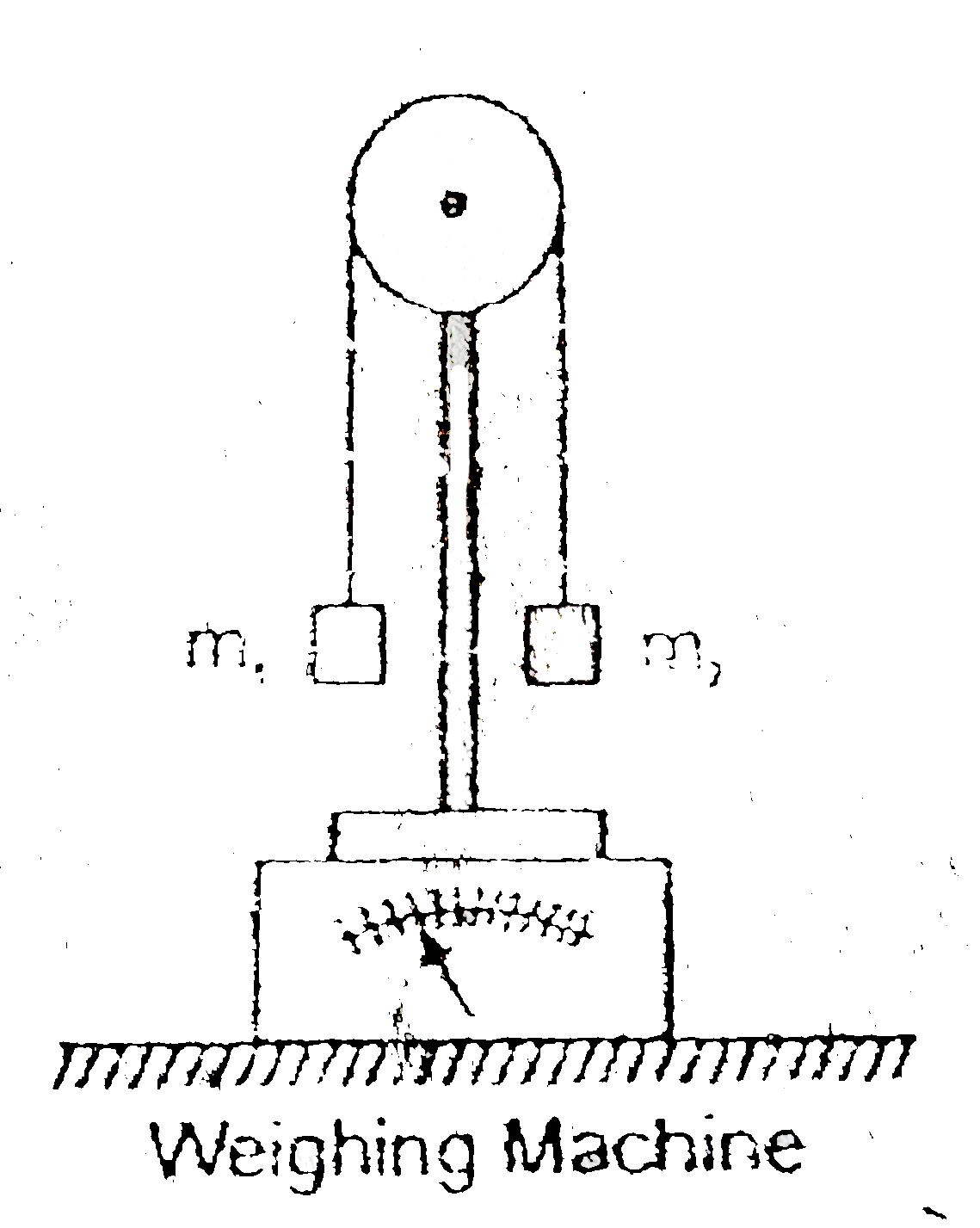 AW1>W2>W3BW1<W2<W3CW1=W2=W3DW1=W2<W3
AW1>W2>W3BW1<W2<W3CW1=W2=W3DW1=W2<W3Two blocks of masses m1=4kg and m2=2kg are connected to the ends of a string which passes over a massless, frictionless pulley. The total downwards thrust on the pulley is nearly
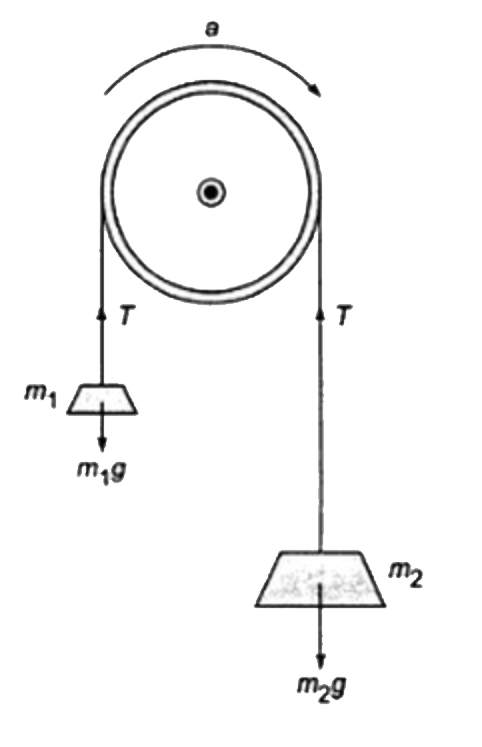 A27 NB54 NC0.8 NDZero
A27 NB54 NC0.8 NDZero
Two masses m1 and m2 are attached to a string which passes over a frictionless smooth pulley. When m1=10kg,m2=6kg, the acceleration of masses is
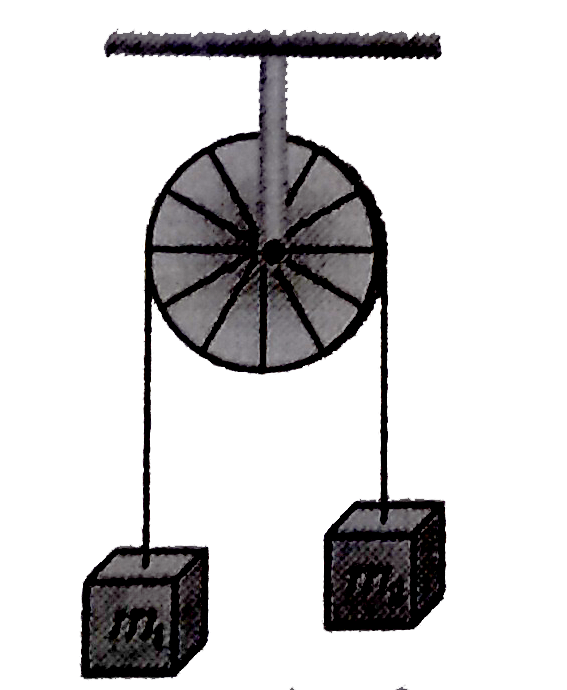
View SolutionTwo masses M1=5kg,M2=10kg are connected at the ends of an inextensible string passing over a frictionless pulley as shown. When masses are released, then acceleration of masses will be
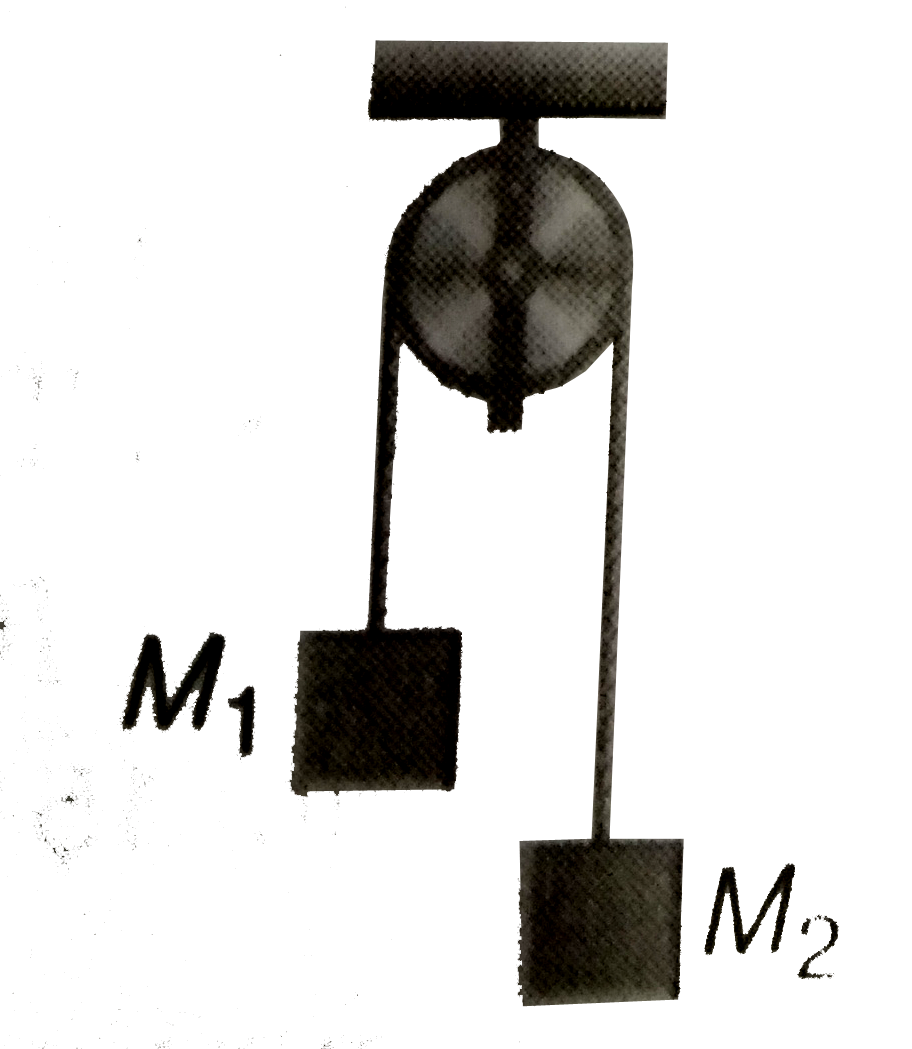
View SolutionTwo masses m1=5kg and m2=4.8kg tied to a string are hanging over a light frictionless pulley. What is the acceleration of the masses when left free to move?
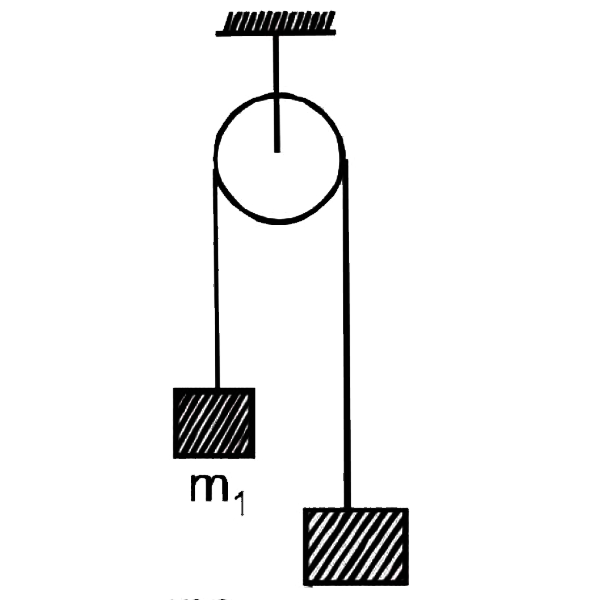
View SolutionTwo masses M1=5kg,M2=10kg are connected at the ends of an inextensible string passing over a frictionless pulley as shown. When masses are released, then acceleration of masses will be

View SolutionThree block of masses m1,m2 and m3 kg are placed in contact with each other on a frictionless table. A force F is applied on the heaviest mass m1, the acceleration of m2 will be

View Solution

